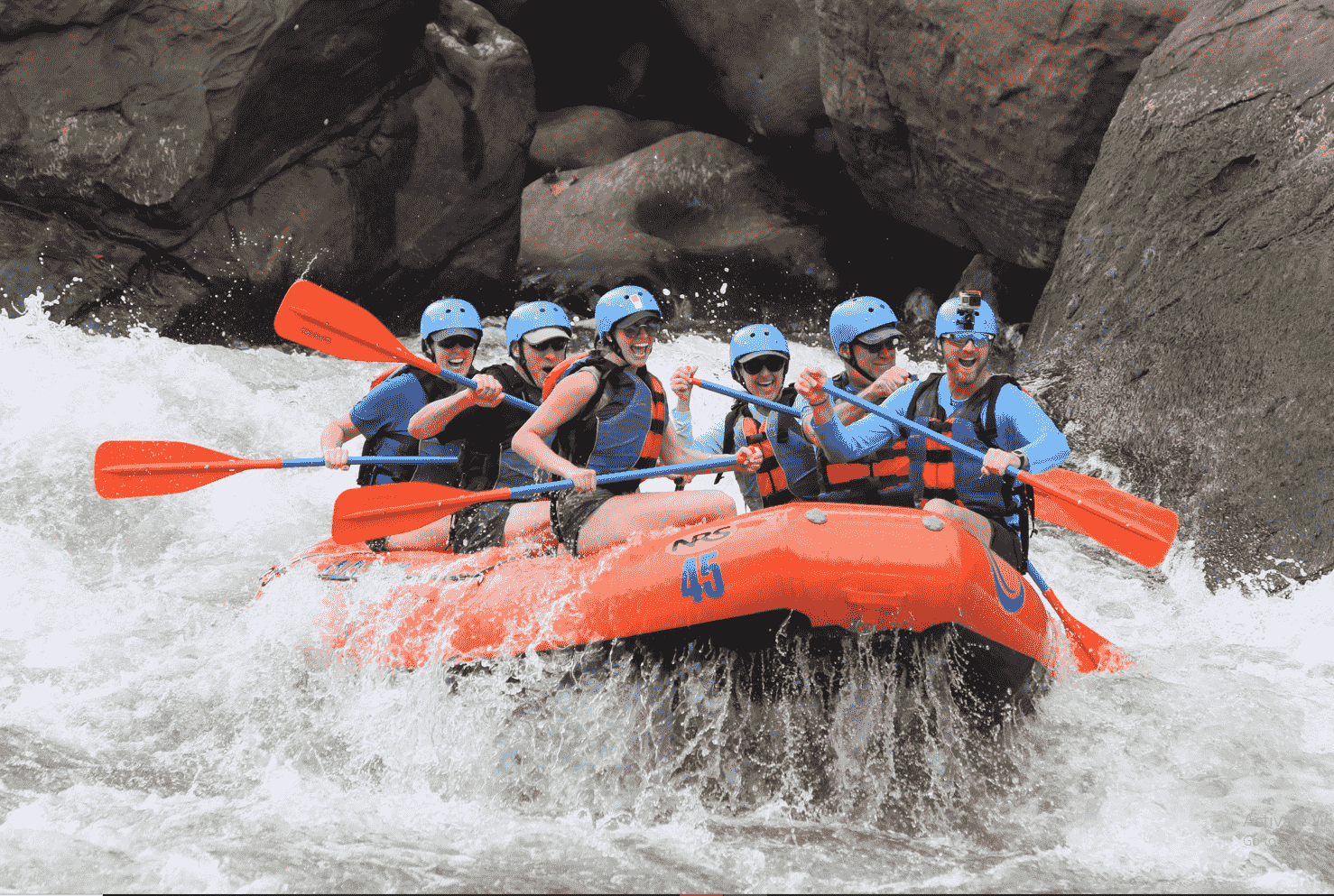Introduction:-White water rafting, a sport that combines adrenaline-pumping excitement with the serenity of nature, has become an increasingly popular outdoor activity for thrill-seekers and nature enthusiasts alike. This exhilarating water sport takes participants on a journey down turbulent rivers, navigating through rapids and obstacles, providing an unforgettable experience that blends teamwork, skill, and a connection with the great outdoors. In this article, we will explore the origins of white water rafting, the essential skills and equipment required, the best destinations for this thrilling adventure, and the environmental impact of this sport.
The Origins of White Water Rafting
White water rafting traces its roots back to the mid-19th century when rubber was introduced, allowing the creation of inflatable rafts. The sport gained popularity in the 1970s as equipment became more advanced and safety standards improved. What was once a mode of transportation for early explorers navigating treacherous waters transformed into an adrenaline-fueled recreational activity.
Skills and Techniques
White water rafting is more than just riding the waves – it requires a combination of physical strength, coordination, and teamwork. Before embarking on a rafting adventure, participants undergo a safety briefing and training session to familiarize themselves with essential techniques. These skills include paddle strokes, communication signals, and how to effectively navigate the raft through various types of rapids.
Paddle strokes are crucial for controlling the raft and maneuvering through the turbulent waters. The forward stroke propels the raft forward, while the backward stroke helps in reversing its direction. The draw stroke is used to pull the raft toward one side, and the sweep stroke is employed for making wide turns. A well-coordinated team that can synchronize their paddle strokes is essential for successfully navigating the rapids.
Communication is key in white water rafting. Guides use a set of standardized signals to convey instructions to the team, ensuring everyone is on the same page. Signals like “forward paddle,” “back paddle,” and “stop” help guide the raft through challenging sections of the river. Clear communication is crucial for avoiding obstacles, steering away from rocks, and maintaining control in the midst of the rushing water.
Navigating the Rapids
White water rapids are classified based on their difficulty, ranging from Class I (easy and gentle) to Class VI (extremely difficult and dangerous). Each class presents its own set of challenges, requiring different levels of skill and experience. Novice rafters typically start with Class I or II rapids, while experienced adventurers may seek the thrill of tackling Class IV or V rapids.
One of the most famous rivers for white water rafting is the Colorado River, home to the Grand Canyon. Rafters can experience a variety of rapids, from the relatively mild Class II to the heart-pounding Class V. The Gauley River in West Virginia is another renowned destination for adrenaline junkies, offering challenging rapids with names like “Pillow Rock” and “Lost Paddle.”
Elevate your game with top-notch sports gear Long jump and High jump expert advice. Explore our latest collection for unbeatable performance and style.
Best White Water Rafting Destinations
-
The Grand Canyon, Arizona, USA: Rafting through the Grand Canyon is a once-in-a-lifetime experience. The Colorado River winds its way through the stunning red rock formations, providing both breathtaking scenery and thrilling rapids.
-
The Futaleufú River, Chile: Known for its turquoise waters and challenging rapids, the Futaleufú River in Chile is a top destination for experienced rafters. Surrounded by the Andes Mountains, the scenery adds to the overall adventure.
-
The Zambezi River, Zambia/Zimbabwe: For those seeking an adrenaline rush, the Zambezi River, home to the famous Victoria Falls, offers Class IV and V rapids. Rafting here is a wild ride with the added bonus of spectacular views.
-
The Pacuare River, Costa Rica: Lush rainforests, exotic wildlife, and thrilling rapids – the Pacuare River in Costa Rica has it all. Rafters can enjoy a perfect blend of adventure and natural beauty.
-
The Noce River, Italy: The Noce River in the Italian Alps provides an exhilarating rafting experience with its challenging rapids. The stunning alpine scenery adds to the charm of this European rafting destination.
Environmental Impact
While white water rafting offers an unforgettable adventure, it’s crucial to consider its environmental impact. Responsible and sustainable practices are necessary to preserve the pristine natural environments that attract rafting enthusiasts.
-
Leave No Trace: Rafters should adhere to the principles of “Leave No Trace,” minimizing their impact on the environment. This includes properly disposing of waste, avoiding damage to vegetation, and respecting wildlife habitats.
-
Support Local Conservation Efforts: Many rafting destinations are located in ecologically sensitive areas. Supporting local conservation initiatives helps ensure the preservation of these natural wonders for future generations.
-
Choose Eco-Friendly Operators: When selecting a rafting outfitter, opt for companies that prioritize environmental sustainability. This may include using eco-friendly equipment, promoting responsible tourism, and contributing to conservation efforts.
-
Educational Initiatives: Rafting companies can play a role in educating participants about the ecosystems they are exploring. Increased awareness fosters a sense of responsibility and encourages environmentally conscious behavior.
Conclusion
White water rafting is not merely a sport; it’s a thrilling journey that connects individuals with the raw power of nature. As participants paddle through rushing rapids and navigate the twists and turns of rivers, they experience the perfect blend of excitement and tranquility. The sport’s rich history, essential skills, and breathtaking destinations make it an adventure worth undertaking for both novice and experienced rafters.
However, with the privilege of enjoying these natural wonders comes the responsibility of preserving them. Sustainable practices, environmental awareness, and supporting local conservation efforts are integral to ensuring that white water rafting remains an exhilarating and eco-friendly pursuit for generations to come. As we navigate the rapids, let’s also navigate towards a future where adventure and environmental stewardship go hand in hand.





